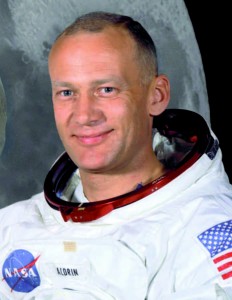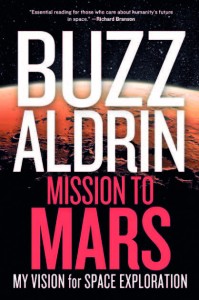MONDAY, 25 NOVEMBER 2013
Nigh on fifty years ago, Buzz Aldrin and Neil Armstrong became the first humans to set foot on another world. Now Aldrin is urging mankind to take a much larger leap—not merely to visit but to colonize Mars.In his recent book Mission to Mars, Aldrin provides practical solutions, both political and scientific. Via video chat, Aldrin describes his vision:
“Going back to the early eighties, there seemed to be a growing interest in some kind of return to the Moon, and I began to think that this was the time to think about some alternatives. And I began to realise that maybe there were even better ways of going to the Moon, especially to flyby the Earth and the Moon, and continuously cycle back and forth. [...] The former NASA administrator, Tom Pain, understood this and encouraged me to take a look at Mars. I began to try and use a very simple, basic orbital mechanism, and it seems as though it might be easier to get to Mars and back than it might be to get to the Moon and back. That we had used gravity assist, departing the Earth, to swing by other objects in Space, which then redirected us to other objects in space, and then another, and another—it’s called the grand tour—and why couldn’t we reverse swing by gravity assist and come back to earth again, with just the right conditions. [...] It is amazing to me that since these ideas were introduced in 1985, no one in the standard system of NASA or other countries has realised the advantages of a continuously moving habitat with radiation protection that come with a reusable travelling container between the Earth and Mars.”
One reason might be that humans cannot take being cooped up in tiny environments for twenty- four months at a stretch. Aldrin laughs.
“I don’t think that’s a problem. People behave themselves quite well. When people misbehave, we put them in a cell and they stay there for quite a long period of time”. More seriously, he adds, “We have had people training in Europe for long periods of time, whether it was in Biosphere 2, years ago, or the more Mars500 project. If you are going to spend the rest of your life on Mars, why do you care how rapidly you get there?”
Aldrin has also given some thought on what to do once Mars is reached.
“I have not designed the details of a Mars base, but I have started a semblance of an international lunar base design. I looked around and asked people and have not found anyone who has come up with a concept to bring six or seven nations together and to preserve their individuality but maintain international support. If we can do that on the Moon, the US role would not be to land the components, not even to build large structures, but to assemble the components when they have been sent.”
We move on to a discussion of the dangers of such a long exposure to radiation.
“I have seen some projects by high school kids with layers of protection, a cloth-like material that includes sophisticated molecules like bucky-balls. They are specifically designed for Solar flares. Layers of these materials for background cosmic radiation. They are being advised by some very credible PhDs. I am very interested and they are getting protection for the proprietary nature of their inventions—but given that these guys are seventeen, eighteen, nineteen and have a fantastic motivating t-shirt, you can never tell what the future will yield.”
It’s the ease of that response that brings me up short. It has been 50 years since this man walked on the Moon, but it has also been nearly forty years since anyone last set foot on it. I ask him about this.
“I am trying to address that by organizing a space policy analysis by a group of people that are well respected [...] to uncover the mistakes that recently led us where we are.”
I finally ask whether there are any science fiction writers he thinks could provide the same inspiration to today’s youth as did in his?
“What would motivate people to the very challenging task of leaving the solar system and going to some unknown location? So I wrote this science fiction story called Encounter with Tiber and it is in the process of being made into a television series of ten episodes. The book is available on ebooks now.”
I’m left wondering whether Buzz Aldrin is a voice for a credible future, or a relic of a more hopeful time. Either way, his voice is one that needs to be heard.
Hugo Schmidt is a 4th year PhD student at the Department of Biochemistry


